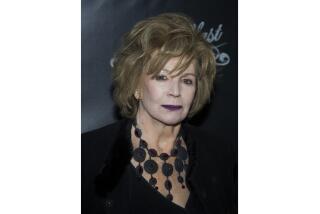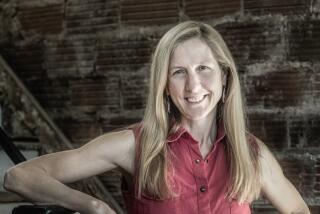From the Outback to the Grail : THE ROAD FROM COORAIN <i> by Jill Ker Conway (Alfred A. Knopf: $18.95; 233 pp.; 0-394-57456-7) </i>
- Share via
In 1975, when Jill Ker Conway became the first female president of Smith College, I thought how amazing that an American women’s college should take so long to do the obvious thing, and that it should then confer this “first” on an Australian.
At sundry dinner parties, I expatiated on the disproportionate presence of Australian women on the world stage: Germaine Greer, Joan Sutherland, Dr. Helen Caldicott (the outspoken organizer of anti-nuclear protest), Alison Cheek (the first “American” woman to be ordained in the Episcopal Church), and others. Why all this high flying? Because, I offered from personal experience, in Australia a high-achieving intellectual woman is automatically out on a limb. She has no place to go but out and up. She has to leave the country just to find a space for herself, and then she’s scrambling so hard to disprove her insignificance that suddenly, there she is at the top.
Conway’s fascinating autobiography fleshes out this life pattern. Vivid, poignant, witty, rich with anecdote and detail, compulsively readable, it delineates a life that is part adventure story, part trial by ordeal, part the academic version of “My Brilliant Career,” and part triumphant revision of the quest myth--with a female hero. Jill, youngest child of three, was told by her father who died when she was 11 years old: “Make something of yourself, Jill,” and she set out to find her own Grail.
It is an extraordinary story. Reared on Coorain, her parents’ 30,000-acre sheep station in western New South Wales, she was 7 before she saw another girl child. At 8, she was riding the boundaries and herding sheep and discussing Churchill and MacArthur and the international politics of the war with her parents. With all able-bodied men at the front, and her brothers at boarding school in Sydney, she was doing a man’s work at her father’s side. By 10, she was intimately aware of the harsh consequences of a four-year drought: dust storms, stock dying by the hundreds, the family plunging into debt, her adored and energetic father sliding into despair. The end of the war did not mean the end of the drought. In December, 1944, on a day of dust storms and 108-degree heat, her father’s body was found in an outlying water hole on the property.
Her mother was devastated but chose to battle on alone against the drought for months before delegating the struggle to a manager and leaving for Sydney. For 11-year-old Jill, reared in the profound emptiness and silence of the outback, Sydney might have been another planet.
School was culture shock, but the fledgling intellectual was finding her wings. She won a scholarship to Sydney University where she majored in Australian history and covered herself with academic glory and prizes. But there were to be more ordeals, among them the death of her beloved oldest brother in a car accident--a loss that triggered severe depression, dependency, and erratic behavior in the once-strong mother. Then there was the debacle of the planned career as a diplomat. Incredibly (though to this Australian reviewer, predictably), while accepting the male student with whom she shared top honors, the Department of External Affairs rejected Conway, Sydney University’s star history student. Too good looking, too feminine, too intellectually aggressive, the reports said.
Angry and depressed, Jill fled the country, but drifted: mothering her deteriorating mother, wandering around Europe, living in London, even modeling in Mayfair for several months (the body’s consolation to the rejected mind). But that mind could not be repressed for long. “Make something of yourself, Jill.”
She applied to Harvard Graduate School and was accepted. There followed a teaching position at the University of Toronto, where she eventually became vice president; the presidency at Smith for a 10-year term; and since 1985, a professorship at MIT.
In recounting this journey, Conway is lyrically passionate in her description of outback and drought, and intellectually acute in her analysis of Sydney intellectuals and their social and political mores. At times, however, her prose takes on the breathy gush of Society Pages of Sydney’s north shore private schools, of which she is a product. A fellow student was noted “for the melodiousness of her voice and her silvery peel of laughter”; students “wandered off for coffee to prolong the excitement created by the skillful lecture and its wonderful subject.” But this is a slight flaw in a wonderful book. The road from a sheep station in outback Australia could hardly have had more surprising twists and turns, nor led to a more illustrious Grail.
More to Read
Sign up for our Book Club newsletter
Get the latest news, events and more from the Los Angeles Times Book Club, and help us get L.A. reading and talking.
You may occasionally receive promotional content from the Los Angeles Times.










